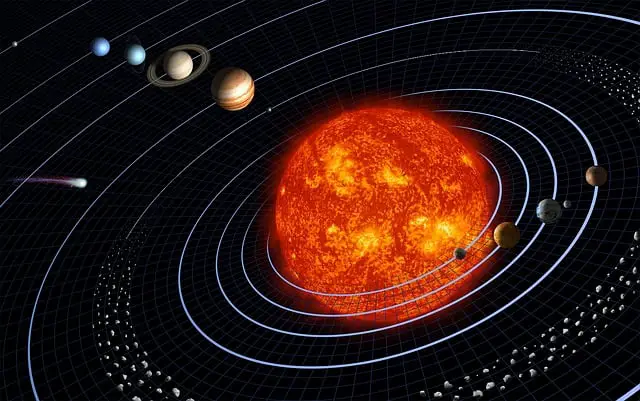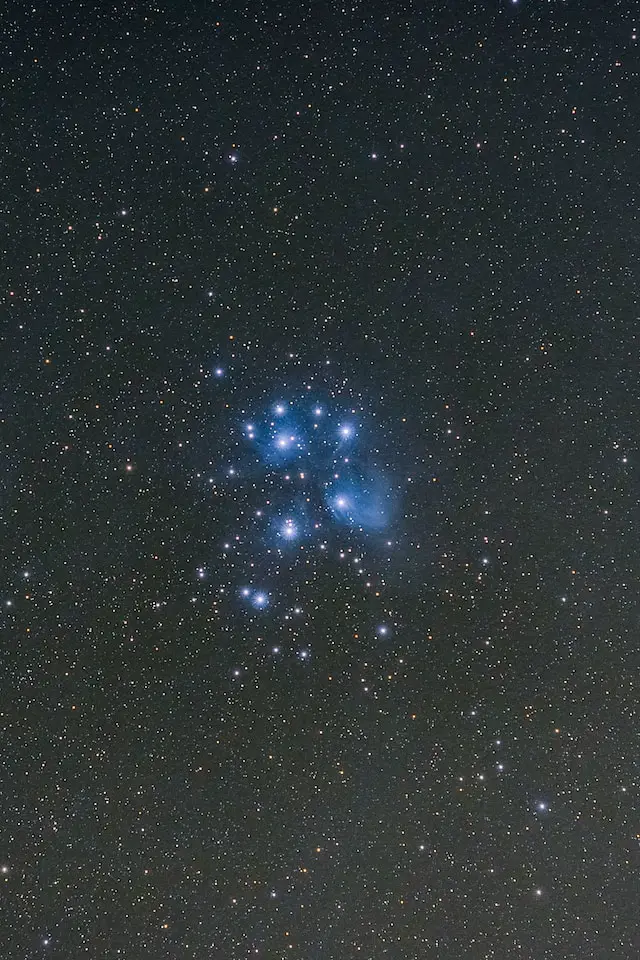
The sheer expanse of our solar system has held humanity in awe for centuries.
Across epochs, from the sagacious observers of antiquity to contemporary scientists, the quest to fathom the enigmatic celestial entities enveloping our Earth has unfurled as a riveting odyssey characterized by unbridled inquisitiveness and profound revelations.
Within the confines of this article, we embark upon a captivating voyage into the annals of planetary discovery, spotlighting the intrepid trailblazers who illuminated the cryptic realms of our solar system’s planets.
History of Planetary Discovery
The story of planetary discovery is a tale woven through time, marked by the curiosity and ingenuity of those who gazed up at the night sky.
Let’s take a chronological journey through the discovery of each planet in our solar system:
- Read also: Who Discovered the Earth is Round And How They Did It
- Read also: Why Are Planets Round? The Science Behind Their Spherical Shape
Mercury and Venus
In the ancient realms of Mesopotamia and Egypt, where the night sky held a mystical allure, early astronomers found themselves spellbound by celestial wonders.
It’s highly likely that among their discoveries were Mercury and Venus, the two nearest neighbors to the Sun in our solar system.
These planets, aglow with radiant brilliance, bore a striking resemblance to the stars that adorned the heavens, making them readily visible even to the unaided eye.
However, their dynamic celestial choreography presented a formidable challenge in distinguishing them from their stationary stellar counterparts.
Mercury’s swift orbit and Venus’s intriguing alternation between the roles of the “Evening Star” and the “Morning Star” added to their celestial mystique.
Mars
In the ancient annals of Greek astronomy, a significant milestone occurred, likely around the 2nd century BC—the discovery of Mars, often referred to as the “Red Planet.”
Mars distinguished itself with its unmistakable crimson hue, a celestial gem that, despite its distinctiveness, posed challenges in distinguishing it from the multitude of stars that adorned the night sky.
This momentous revelation marked a pivotal juncture in the early pursuits of planetary exploration.
It necessitated precise and patient observations, as the subtle dance of Mars against the fixed starry backdrop demanded meticulous tracking.
This acknowledgment of Mars as a bona fide planet ignited a profound spark of fascination among the ancient Greeks, laying a sturdy foundation for the more intricate and advanced astronomical investigations that would follow.
Jupiter and Saturn
Ancient astronomers in Babylon made a remarkable discovery in the 7th century BC when they identified the luminous giants, Jupiter and Saturn, in the night sky.
These gas giants, despite the brilliance of the stars around them, stood out prominently.
Recognizing them as planets required meticulous observation and marked a significant advancement in understanding the solar system.
The discovery of Jupiter and Saturn fueled fascination, influencing mythology, religion, and early scientific pursuits in ancient civilizations.
Today, these celestial giants remain enduring symbols of human curiosity and our quest to explore the cosmos.
Uranus
The unveiling of Uranus, a celestial milestone, can be attributed to the painstaking efforts of Sir William Herschel, who, in 1781, was engaged in the quest to spot comets.
Amid his celestial pursuits, Herschel encountered a faint, seemingly motionless object adrift in the nocturnal expanse.
His unwavering commitment to meticulous observation and thorough analysis ultimately led to a groundbreaking realization—a new planet had entered the stage of our solar system.
This revelation marked a profound expansion of our cosmic comprehension and underscored the ceaseless spirit of human curiosity and innovation.
Uranus became a potent symbol of the uncharted mysteries that beckon from the depths of the cosmos.

Neptune
Neptune, the distant planet, was discovered in 1846 by German astronomer Johann Gottfried Galle.
This discovery was made possible through the meticulous calculations of French mathematician Urbain Le Verrier, who predicted Neptune’s existence based on anomalies in Uranus’s orbit.
Le Verrier’s precision-guided astronomers to Neptune’s exact location in the night sky, highlighting the harmony between mathematics and observational science.
Neptune’s discovery symbolizes the potential of human curiosity and intellect in unraveling cosmic mysteries, emphasizing the enduring pursuit of knowledge.
Pluto
The discovery of Pluto in 1930 by American astronomer Clyde Tombaugh marked a significant achievement in planetary exploration.
Tombaugh’s meticulous search, based on predictions by Percival Lowell, led to the identification of this distant ninth planet in our solar system.
Pluto’s discovery symbolized the vastness of our solar system and human determination in exploration.
It sparked further interest in exploring the outer regions, particularly the Kuiper Belt. Pluto remains a symbol of humanity’s unwavering pursuit of knowledge and the mysteries that await discovery in the universe.
- Read also: Why is Earth the Only Planet with Life?
- Read also: How Far is The Sun From Earth in Light Years? Facts to Know
Conclusion
The saga of uncovering planets within our solar system stands as a remarkable tribute to human curiosity, relentless observation, and the march of scientific advancement.
It’s a narrative that spans millennia, from the earliest skywatchers who discerned these celestial wanderers using nothing but their unaided eyes to the epochal revelations made possible by telescopic exploration in more recent eras.
Each chapter in this profound journey has not only expanded our comprehension of the cosmos but also illuminated the boundless potential of human inquiry and exploration.
FAQs
Ancient astronomers recognized planets by observing their movement against the backdrop of fixed stars. Unlike stars, planets exhibited a characteristic “wandering” or non-fixed pattern in the night sky.
In 2006, the International Astronomical Union redefined the criteria for classifying celestial objects as planets. Pluto did not meet the revised criteria and was reclassified as a dwarf planet due to its size and orbital characteristics.
While it’s unlikely that large planets remain undiscovered in our solar system, there is ongoing research into the existence of distant and potentially smaller celestial objects in the Kuiper Belt and beyond.



